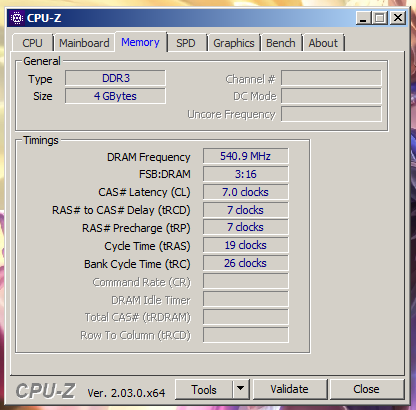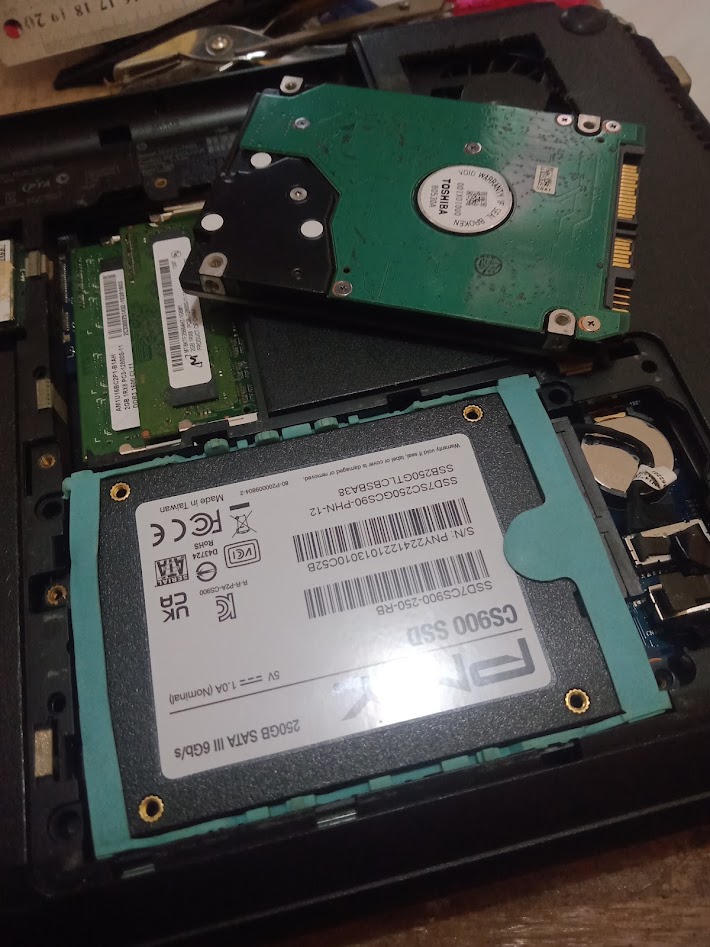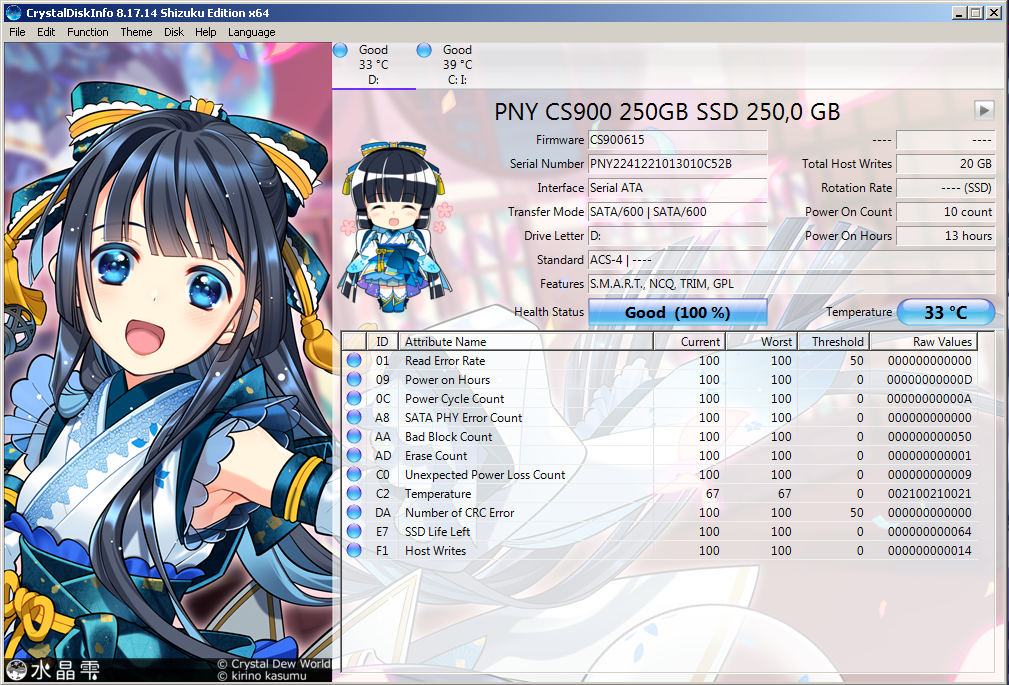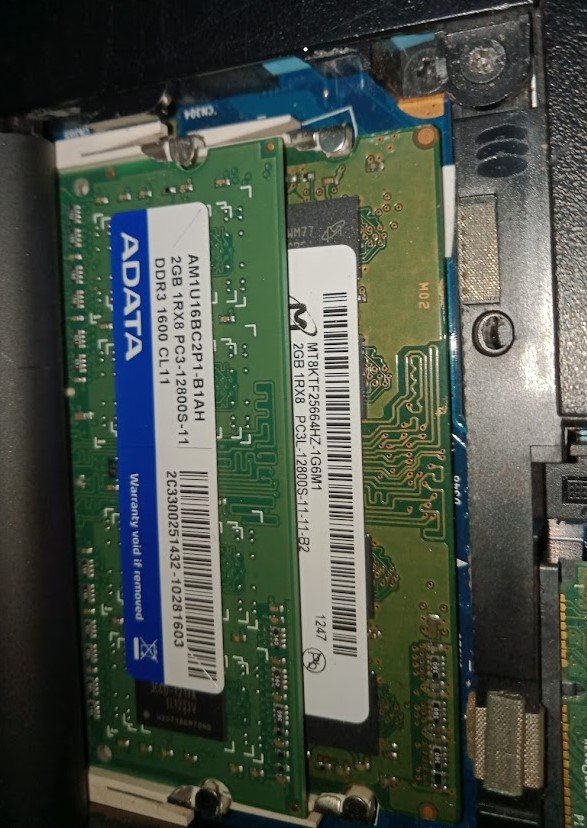Comparing: PNY CS900 250GB vs DDR3 SODIMM 1066MHz [Disk]
In this comparison, we analyze two Disks: PNY CS900 250GB and DDR3 SODIMM 1066MHz [Disk], using synthetic benchmark tests to evaluate their overall performance. This side-by-side comparison helps users understand which hardware delivers better value, speed, and efficiency based on standardized testing. Whether you're building a new system or upgrading an existing one, this benchmark-driven evaluation offers valuable insights to guide your decision.

PNY CS900 250GB
| Type: | Disks |
|---|---|
| Model: | PNY CS900 250GB |
| Capacity: | 250GB |
| Interface: | SATA-III 6Gbps |

DDR3 SODIMM 1066MHz [Disk]
| Type: | Disks |
|---|---|
| Model: | DDR3 SODIMM 1066MHz [Disk] |
| Capacity: | 2GB |
| Interface: | DDR3 |
Specification Comparison Table
This specification comparison presents technical details of several devices or components to help you understand the key differences between each option. Use this table as a reference to determine which device best suits your needs.
| Specification | PNY CS900 250GB | DDR3 SODIMM 1066MHz [Disk] |
|---|---|---|
| Brand | PNY | - |
| Format | SSD 2.5 | RAM Disk |
| Capacity | 250GB | 2GB |
| Interface | SATA-III 6Gbps | DDR3 |
Submission Comparison Table
This submission comparison table displays the number and details of benchmark data submissions from various devices or components. This information helps you understand the performance based on the benchmarks that have been tested, as well as providing an overview of the consistency and popularity of the available benchmark results.
| No. | Benchmark Software | PNY CS900 250GB | DDR3 SODIMM 1066MHz [Disk] |
|---|---|---|---|
| 1 | ATTO Disk Benchmark - 64M |
Read: 542.37 MB/s Write: 505.26 MB/s |
Read: 1020.00 MB/s Write: 1080.00 MB/s |
| 2 | Cross Platform Disk Test |
Read: 415.87 MB/s Write: 214.49 MB/s |
Read: 658.01 MB/s Write: 265.28 MB/s |
| 3 | CrystalDiskMark |
Read: 535.26 MB/s Write: 478.16 MB/s |
Read: 746.24 MB/s Write: 828.18 MB/s |
Submission Comparison Chart
This chart visualizes the benchmark scores comparison between two hardware devices based on submitted data.
Media Gallery
A collection of photos of tested hardware. These images can help you identify the physical form, model, and variant of the hardware in question. These photos are from our own documentation, and if they are not available we may not be able to document them.
About Hardware PNY CS900 250GB
The PNY CS900 250GB is a SATA III (6Gbps) SSD designed as an affordable upgrade solution for users still using hard disk drives (HDDs). Utilizing 3D NAND flash memory, this SSD delivers major improvements in read and write speeds, power efficiency and operational reliability for everyday computing needs.
It is capable of achieving read speeds of up to 535MB/s and write speeds of up to 500MB/s, making it ideal for speeding up operating system boot times, streamlining application launches and accelerating file transfer processes. Compared to conventional HDDs, the performance improvements offered by the CS900 are very noticeable, especially on systems with limited specifications.
The test was conducted using an HP 1000 1b05AU laptop equipped with an AMD E1-1200 processor, 4GB DDR3 RAM, and Windows 7 64-bit operating system. This laptop supports SATA-III, so it can utilize the maximum bandwidth of the CS900. Although the test system is in the low-end category, the performance improvement after switching from HDD to SSD is significant.
In performance testing, the PNY CS900 250GB showed quite impressive results for the SATA SSD class. Using CrystalDiskMark software, read speeds were recorded at 535.26 MB/s and write speeds reached 478.16 MB/s, reflecting optimal performance on the SATA III interface. Meanwhile, tests using AS-SSD Benchmark recorded read speeds of 444.94 MB/s and write speeds of 397.23 MB/s, showing good performance consistency for various daily usage scenarios such as system booting, opening applications and transferring large files.
The PNY CS900 also offers the added benefits of silent operation, low power consumption and better shock resistance than HDDs, making it a great choice for laptop users who need a reliable and power-efficient storage solution.
With its 2.5-inch form factor and SATA III interface, this SSD is highly compatible with the majority of laptops and desktops, both old and new systems. The PNY CS900 250GB is an economical upgrade option that still delivers high performance for basic productivity, entertainment and everyday use.
Device Test:
Device: HP 1000 1b05au
CPU: AMD E1-1200
RAM: 4GB DDR3
OS: Windows 7
SATA-III
Tuesday, 31 January 2023 05:42:07 | Update: 1 month ago
About Hardware DDR3 SODIMM 1066MHz [Disk]
DDR3 SODIMM 1066MHz is a third-generation memory module with a speed of 1066MHz that is commonly used in laptops and small devices. With the SODIMM form factor, these modules are often the standard choice for mobile computing systems, serving as the main memory for running operating systems, applications, and light to medium multitasking processes.
However, in this particular experiment, two 1066MHz DDR3 SODIMM modules from Micron and ADATA (2GB capacity each) were uniquely configured as a RAMDisk, a temporary storage space that uses RAM capacity to simulate a storage drive with much higher access speeds than SSDs or HDDs.
The 1066MHz DDR3 SODIMM-based RAMDisk test was conducted on an HP 1000 1b05au laptop device, powered by an AMD E1-1200 processor. The system is equipped with a 2x2GB DDR3 SODIMM 1600MHz RAM configuration, but due to processor architecture limitations, the memory only runs in single channel mode with an effective speed of 1066MHz. The operating system used is Windows 7, and to create and manage the RAMDisk, two popular applications, SoftPerfect RAMDisk and ImDisk Virtual Disk Driver, were used. The configured RAMDisk size was 2GB, utilizing some of the available RAM capacity.
Even though the device specifications are old and have limited memory bandwidth, the RAMDisk configured in this system was still able to show excellent performance in the read and write speed benchmarks. Based on tests using CrystalDiskMark, the read speed reached 746.24 MB/s, while the write speed touched 828.18 MB/s. In a follow-up test using ATTO Disk Benchmark with a 64MB block size, the read speed increased to 1020.00 MB/s, and the write speed reached 1080.00 MB/s. These results prove that even on older systems, RAMDisk configurations are still capable of delivering very high I/O performance, far surpassing conventional storage such as HDDs or even some SSDs.
Analysis
The results show that a 1066MHz DDR3-based RAMDisk is still capable of delivering data transfer speeds on par with entry-level NVMe SSDs, even outperforming many SATA SSDs and leaving conventional HDDs far behind. This makes RAMDisks an ideal solution for temporary use such as:
- Application caching,
- Temporary file storage,
- Fast computing with high I/O,
- Software or script testing without the risk of contaminating the main file system.
Although limited to a small capacity (2GB in this test), RAMDisk is still very useful for specific needs, especially for users with more than enough RAM or older devices that want to maximize their performance.
Test on:
Device: HP 1000 1b05au
Specs:
CPU: AMD E1-1200
OS: Windows 7
RAM: 2x2GB Single Channel 2 DIMM 1066MHz (Does not support dual channel due to limitations of the CPU, currently running single channel mode and 1066MHz)
Wednesday, 26 December 2012 14:27:32 | Update: 1 month ago




